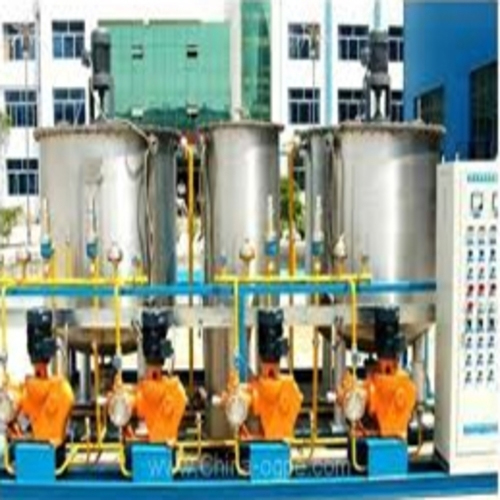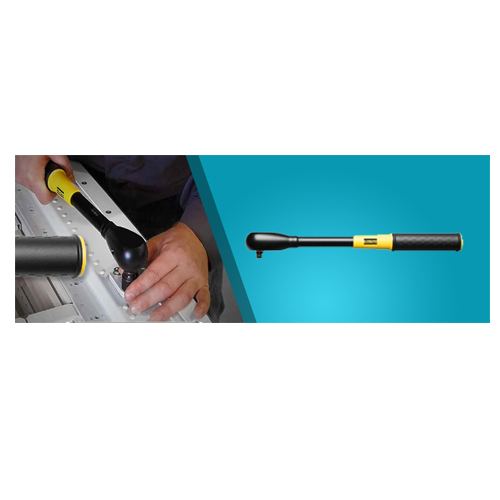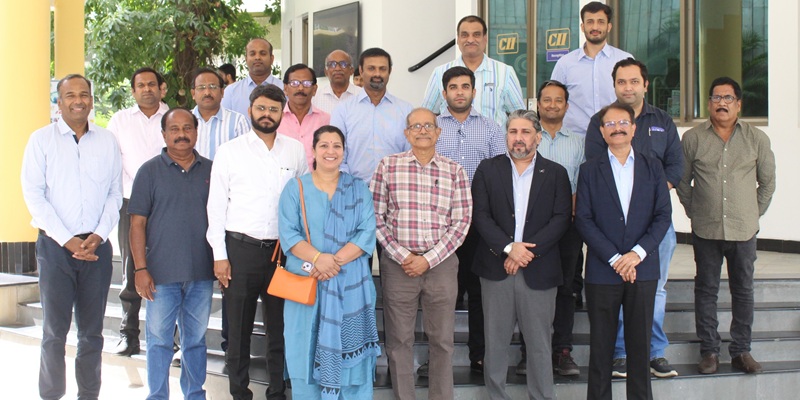Schedule a Call Back
Indian Machine Tools Industry: Raring to Go
 Technical Articles
Technical Articles- Jun 10,11
The industry can expect a demand of Rs 60,000 crore to Rs 70,000 crore over the next five years
By Ravichandran K
 The Machine tools industry forms the fulcrum for competitiveness of the entire manufacturing sector. This is because of the fact that machine tools produce capital goods, which in turn produce the manufactured products. Hence being an integral sector, the growth of the machine tools industry has an immense bearing on the entire manufacturing industry in general, and albeit indirectly, on strategic sectors like defence, railways, aviation and space, and atomic energy in particular.
The Machine tools industry forms the fulcrum for competitiveness of the entire manufacturing sector. This is because of the fact that machine tools produce capital goods, which in turn produce the manufactured products. Hence being an integral sector, the growth of the machine tools industry has an immense bearing on the entire manufacturing industry in general, and albeit indirectly, on strategic sectors like defence, railways, aviation and space, and atomic energy in particular.
Indian manufacturing is at the crossroads today. In the last decade (1998-2008), the sector was one of the best performing manufacturing economies across the globe. Yet, its contribution to overall GDP was one of the lowest across major rapidly developing economies (RDEs), signalling strong potential for faster growth.
According to the Indian Machine Tool Manufacturers' Association (IMTMA), the Indian machine tool industry now ranks 19th in world production and can manufacture the whole range of machine tools, especially the computer numerically controlled (CNC) machines.
The industry has good design strength and all its current products are the result of its own design and development efforts over the last two decades. Nevertheless, the industry suffers from the lack of a strong R&D programme, which is required to propel it to develop machine tools of the latest technology to compete with the best in the world. The absence of strong R&D has resulted in the industry losing nearly 70 per cent of the domestic market for machine tools to foreign manufacturers.
 What should be the roadmap for India's machine tools sector? Coming after a long period of stagnation in the 1990s, the next decade's performance will be crucial to achieving India's overall growth aspirations and employment generation. The outlook for the industry is optimistic and it can expect a continued growth in demand.
What should be the roadmap for India's machine tools sector? Coming after a long period of stagnation in the 1990s, the next decade's performance will be crucial to achieving India's overall growth aspirations and employment generation. The outlook for the industry is optimistic and it can expect a continued growth in demand.
China and Taiwan have been the best performers in recent times. India should aspire to reach that level and target a growth of about 11 per cent per annum (versus 6.8 per cent for FY1999-2009), which will make the country the fourth largest manufacturing economy in the world by 2025 from its current ranking of 13th, according to IMTMA and UNIDO.
Despite good design and manufacturing competence, the product range and technology levels in India have a substantial gap in comparision with the developed world. Measures to bridge these gaps need to be taken urgently to remedy this situation urgently.
Industry Trends
Chart 1 gives a graphical representation of the industry's performance over the last 20 years. It can be seen that the industry has passed through a recessionary period around the year 2000, but recorded high growth in its output after 2003.
This is due to the rapid growth of the automobile sector in India and the emergence of a strong auto components industry, which has been the mainstay of the sector in recent years.
The downturn of 2008 and 2009 affected the industry badly but the industry is on a recovery path in 2010-11 thanks to the upswing in the global auto industry.
The graph also brings out the steep increase in imports to meet the large demand from users in recent years, resulting in a fall in market share for the Indian machine tool industry.
It is this trend that needs to be addressed by the industry by developing new technologies and products to meet the anticipated requirements of the user industries in the future.
Imports
Perhaps the most important development in the last decade is the rapid increase in the import of machine tools. This is the result of the rapid expansion of the automobile industry and the investments that have taken place in components manufacture.
 The Indian machine tools industry has lost domestic market share in the last decade, from around 70 per cent in the year 2000 to around 30 per cent in 2010. Imports have been strong in certain product lines such as grinding, gear cutting, metal forming and large machines where the Indian machine tools industry is weak, according to IMTMA. There has also been import in product lines like CNC turning centres and machining centres where the domestic manufacturers have limited capacity to meet the sudden surge in demand.
The Indian machine tools industry has lost domestic market share in the last decade, from around 70 per cent in the year 2000 to around 30 per cent in 2010. Imports have been strong in certain product lines such as grinding, gear cutting, metal forming and large machines where the Indian machine tools industry is weak, according to IMTMA. There has also been import in product lines like CNC turning centres and machining centres where the domestic manufacturers have limited capacity to meet the sudden surge in demand.
Exports
As can be seen from the data presented, exports of machine tools from India are not significant. This is due to the large domestic market, which absorbs almost the entire production.
Of late, some Indian machine tool manufacturers with niche technology/ products (EDMs, grinding machines, CNC turning centres, automats, etc), have entered the export markets by setting up subsidiaries and marketing offices in Europe, China, etc.
Another encouraging trend is that Indian machine tool manufacturers have even acquired machine tool companies in France, Canada and other countries. The strategy is to complement their products and extend market reach both in India and abroad. These efforts appear to be successful, but need to be seen whether they are sustainable over the long term. Achieving these aspirations will not be easy.
It will require coordinated efforts to develop necessary enabling infrastructure, capture new avenues for growth and higher labour and capital productivity and shift India's manufacturing competitiveness to the next level. Of late there has been a perceptible change in the image of the "Made in India" brand in overseas markets, which is particularly true for Indian-built machine tools.
Enhanced features, competitive pricing and marketing focus has increased demand for India-made machine tools in overseas markets, particularly in Europe, United States, and the East-Asian region.
This is what Indian machine tools manufacturers are hoping to leverage upon, and are optimistic of posting a much larger export turnover in the next few years. India-made machine tools are currently exported to over 50 countries; the major importers being the United States, Italy, Germany, and countries from the SAARC region and the Middle East.
Lathes and automats, electric-discharge machines, drilling machines and machining centres formed the bulk of export orders for Indian manufacturers. These machines from India are generally favoured in overseas markets primarily due to their cost competitiveness, as compared to those available elsewhere.
The Indian machine tools industry manufactures almost the complete range of metal-cutting and metal-forming machine tools. Customised in nature, the products from the Indian basket comprise conventional machine tools as well as CNC machines.
In keeping with the current trends, and emerging demand, the CNC segment could be the driver of growth for the machine tools industry in India.
Impact on SMEs
 The introduction of WTO regime has necessitated extensive changes in the approach of the Indian machine tools industry to further its development. As a result, the Indian machine tools industry has been affected in some of its operations.
The introduction of WTO regime has necessitated extensive changes in the approach of the Indian machine tools industry to further its development. As a result, the Indian machine tools industry has been affected in some of its operations.
SMEs now have to develop their own products and cannot depend on 'Reverse Engineering.' Also it is essential that they conform to international standards, especially environment protection measures.
A permanent monitoring mechanism is to be created, may be within the Secretariat of IMTMA, to analyse the impact of the above-mentioned provisions of WTO on a regular basis and results circulated among all member companies. The government has also come up with a policy for the development of the machine tools industry.
Quantitative Restrictions (QRs) were removed from the machine tools business well ahead of any other product group. By 1992, all remaining physical barriers to import machine tools were eliminated.
The duty on machine tools has been consistently reduced from 110 per cent to 20 per cent and is expected to be reduced further. The industrial policy for investment and technology upgrading has been generally liberalised since 1991. The major components of the industrial policy include a de-licensed environment, so that the industry is completely free from any controls. Anyone (even a foreign company) can set up a plant anywhere (outside urban limits) with 100 per cent equity and managerial control without having to obtain permission for it.
Other aspects include:
??/strong> Export related incentives
??/strong> Institutional backup
??/strong> Introduction of VAT, and
??/strong> Patent Regulations - A comprehensive bill 'The Indian Patents Act' has been promulgated fully conforming with requirements under TRIPS of WTO.
Around 750-800 companies produce machine tools, parts, accessories and sub-systems in India. Of these, around 400 produce complete machine tools of all types and sizes; 25 are large industries and the rest are SMEs (IMTMA).
Geographically, important machine tool producing centres are Bangalore and Chennai in south India, Pune, Rajkot, Jamnagar and Surendranagar in western India and Batala, Jalandhar, Ludhiana and Faridabad in north India.
Around 50 per cent of the total machine tools industry output comes from Bangalore and surrounding areas where many large companies such as HMT, the Ace Group, BFW and several MNCs and SMEs in the sector are situated. In the global scenario, Asia accounted for 37-38 per cent of world production in 1994 and 1995, with China, Singapore, Hong Kong, Malaysia, South Korea, Taiwan and Thailand dominating. A crucial element in the high growth economies of Asia and the Pacific region is the issue of price sensitiveness.
This will force a shift of machine tools production from high cost areas to the more competitively priced Asia and the Pacific region. The Indian machine tools industry is way behind the global majors in production, improving its ranking from 22nd in 2002 to 21st in 2003 and 19th currently. This is the golden chance for the Indian machine tool industry.
An analysis of the sector shows that many aspects perceived as weaknesses have been successfully turned around. For instance, skilled manpower, a technical base in diverse fields, availability of basic raw materials, the wide range of products at industry level, and a rising class of technical entrepreneurs are all pushing India up the global ladder.
 The bonanza for solving the sector's problems is huge. Opportunities include winning markets, creation of a low cost manufacturing base, which in turn will enable strategic alliances, better systems to compete against China and a large and growing domestic market in areas such as consumer durables, automotive components and accessories, castings/forgings, etc.
The bonanza for solving the sector's problems is huge. Opportunities include winning markets, creation of a low cost manufacturing base, which in turn will enable strategic alliances, better systems to compete against China and a large and growing domestic market in areas such as consumer durables, automotive components and accessories, castings/forgings, etc.
A simple strategy of motivating the Indian SMEs to meet the emerging challenges of competition has been pursued. The industry associations and the government institutions have helped the industry in understanding the potential both in the domestic and overseas market. The structured approach consists of:
??/strong> Identification of the potential weaknesses in product, features, quality, etc
??/strong> Development of an action plan for addressing the weaknesses
??/strong> Exposure of the industry for updating the knowledge and information to correct the weaknesses through adoption of improved designs, improved manufacturing practices, etc
??/strong> Development of market linkages particularly in Europe for expanding the market base
??/strong> Training in key areas to facilitate industry in reducing production cost
??/strong> Identification of product range and the related target market, and
??/strong> Concurrent focus on domestic and export markets.
Foreign Direct Investment (FDI)
This is the most preferred option for development of the machine tools industry in India. However, due to limitation of production and longer gestation period associated with machine tools industry, not many cases of FDI from overseas companies into the machine tools sector in India have been seen. There is a potential for investment of US$ 100 million for production of machine tools and machine tool components, considering the existing capabilities and skills available in India.
The impact of policy and programme interventions, coupled with initiatives of the industry in the globalisation era, has helped the industry in achieving the following:
??/strong> A 25 per cent increase in production of machine tools ??/strong> A 101 per cent increase in export of target group of machine tools ??/strong> 142 per cent increase in turnover of CNC machine tools - 1235 to 3000 units ??/strong> Generation of large export orders in domestic exhibitions, (viz., NMTS, Tooltech, Imtex, etc) ??/strong> 50 per cent increase in production of components and accessories ??/strong> Adoption of faster machining and higher metal removal rates, and ??/strong> Upgradation of 45 units for demonstrative effect in Rajkot, Ludhiana, Batala and Bangalore with enhanced visibility of the 'Made in India' brand and introduction of machines with linear motors.
According to the UNIDO, the recent trends in the Indian machine tool industry indicate:
??/strong> The average growth in 2004-2005 over 2003-2004 was an amazing 47 per cent, and ??/strong> Units have outperformed the market growth achieving 30-35 per cent from 2005-2006 to 2009-2010.
Sizeable orders received by Indian companies at machine tool exhibitions in Italy and Germany in the last couple of years have provided a much needed impetus for tapping the export potential. The machine tools industry is now making huge investments to expand its production base for meeting the growing domestic and overseas markets. A growth of over 30 per cent is expected during the next 5 years. The achievements in the past few years only need to be improved further to tap the growing market and meet the higher expectations of the users.
Thus, the future outlook for the industry is optimistic and the machine tool industry can expect a continued growth in demand. An aggregate demand of Rs 60,000 to Rs 70,000 crore is anticipated over the next five years. If the industry can overcome its constraints in technology and products to meet the high-end requirements and reach a market share of at least 50 per cent, the future of the industry can indeed be bright.
Related Products

Ozone System
Omnicorp Environs & Infratech Co offers a wide range of ozone systems.

SWR ’Slipping’ Wrenches
Reliable
Trade Links offers a wide range of SWR ’slipping’ wrenches.

Gripping Systems – Rgg
Schunk Intec India Pvt Ltd offers a wide range of Gripping Systems – RGG - cleaning
device with shank interface.















